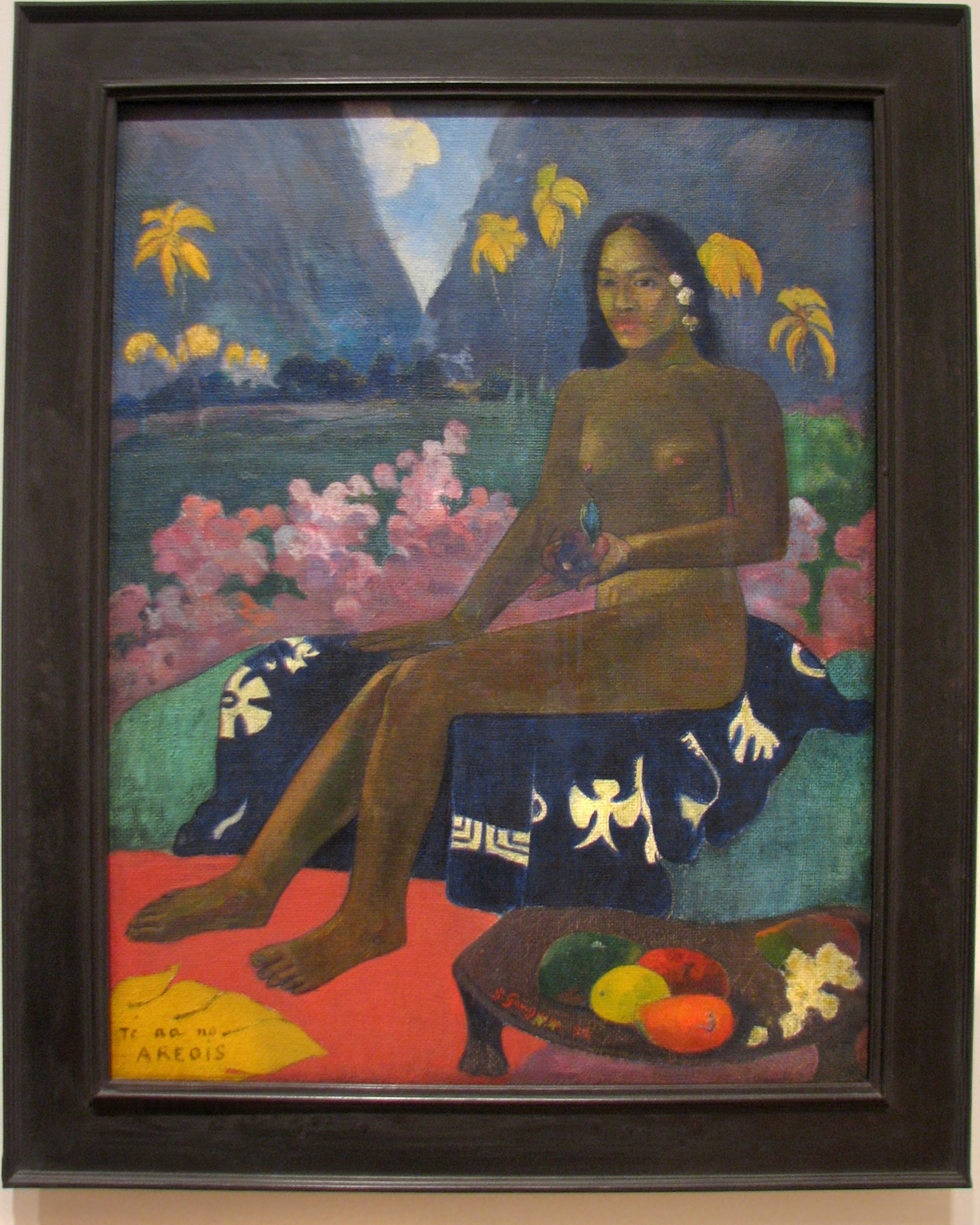
Oil on burlap, 36 1/4 x 28 3/8 in. (92.1 x 72.1 cm)
The William S. Paley Collection, MOMA SPC14.1990
 Oil on burlap, 36 1/4 x 28 3/8 in. (92.1 x 72.1 cm) The William S. Paley Collection, MOMA SPC14.1990 |
|
(From museum website:) "In spring 1891 Gauguin traveled to the South Pacific island of Tahiti, then a French colony. He hoped to find an enchanting paradise, far from the modern metropolis of Paris. However, by the time of Gauguin's arrival Tahiti had been profoundly altered by French colonization: poverty and sickness were rampant. Still, in his paintings of the island Gauguin included elements of the imaginary, configuring Tahiti as a pre-modern land of leisure. His use of bright, flat, and unrealistic colors and his interest in recovering a "pure" subject, closer to nature, were greatly influential to the next generation of European artists, including the Fauves and German Expressionists."
(From The Museum of Modern Art, MoMA Highlights, New York: The Museum of Modern Art, revised 2004, originally published 1999, p. 37) |


